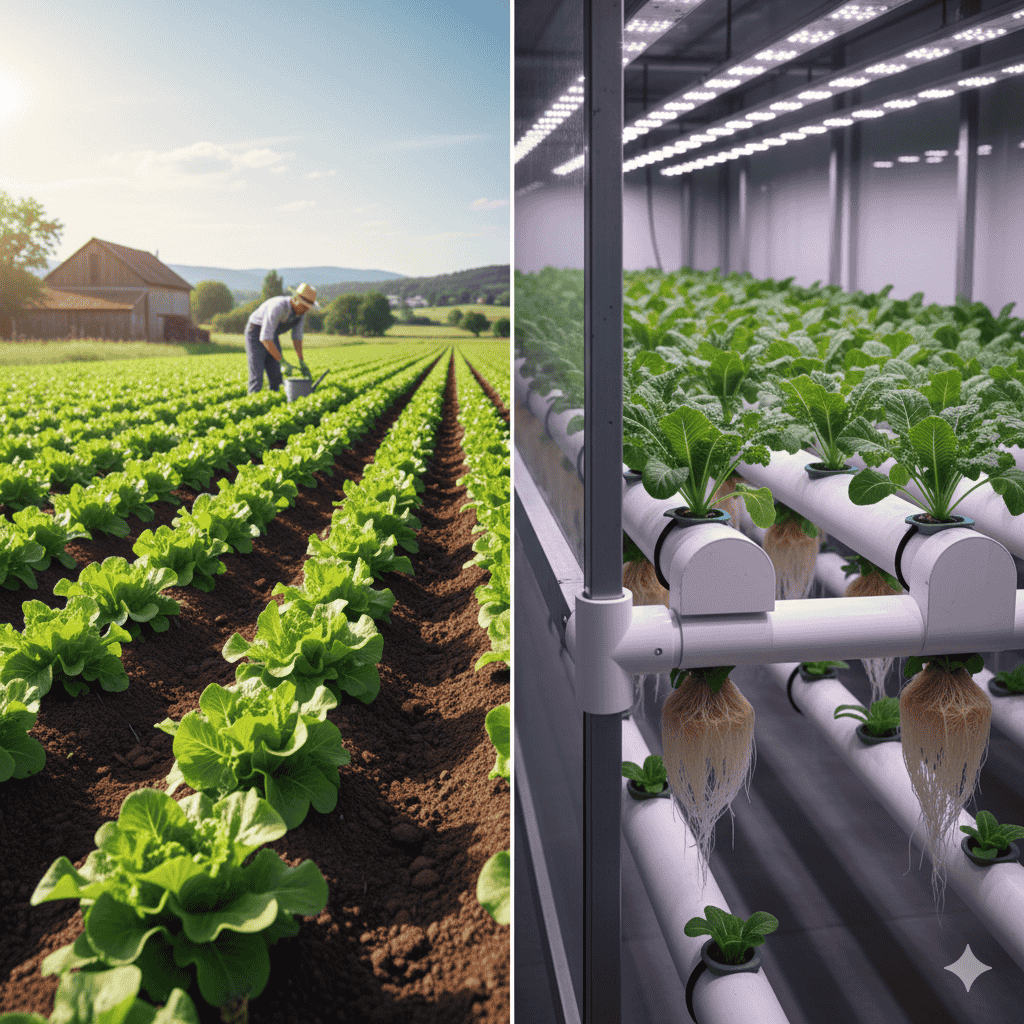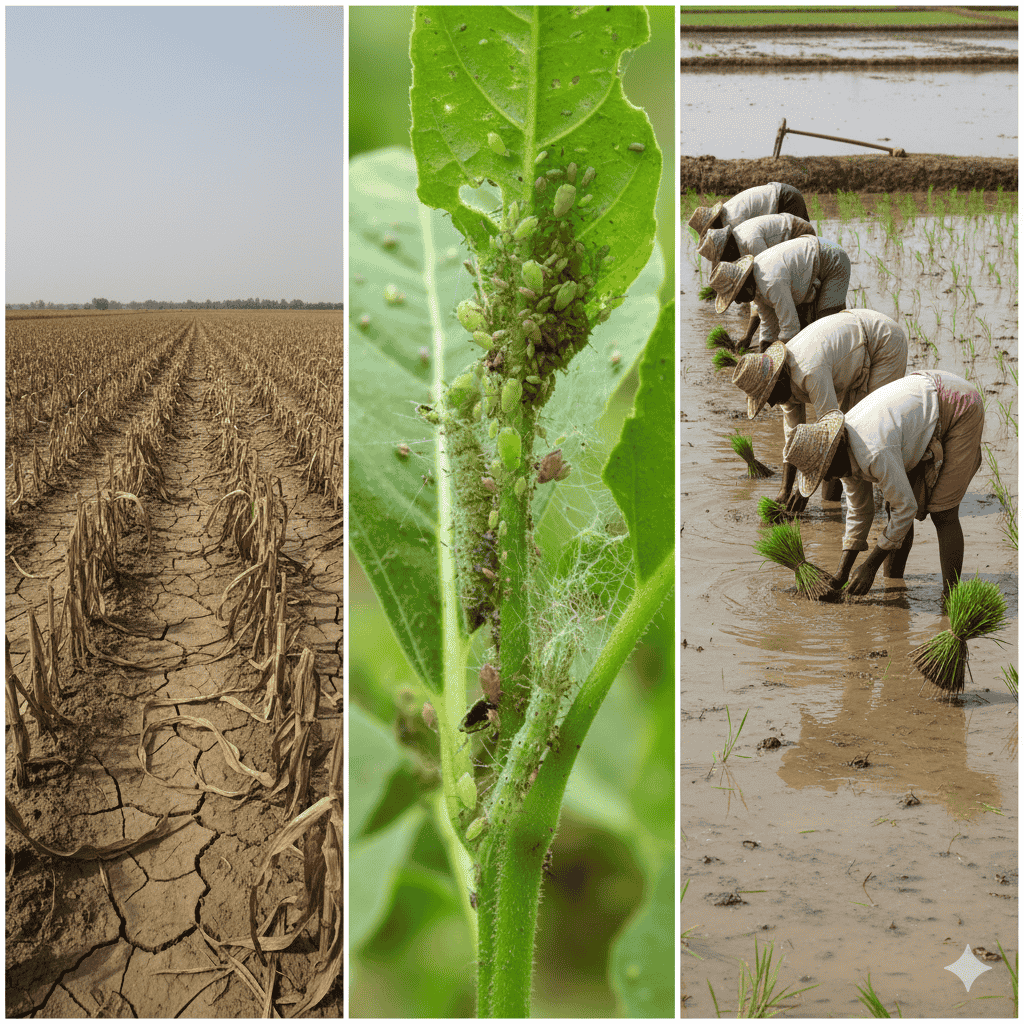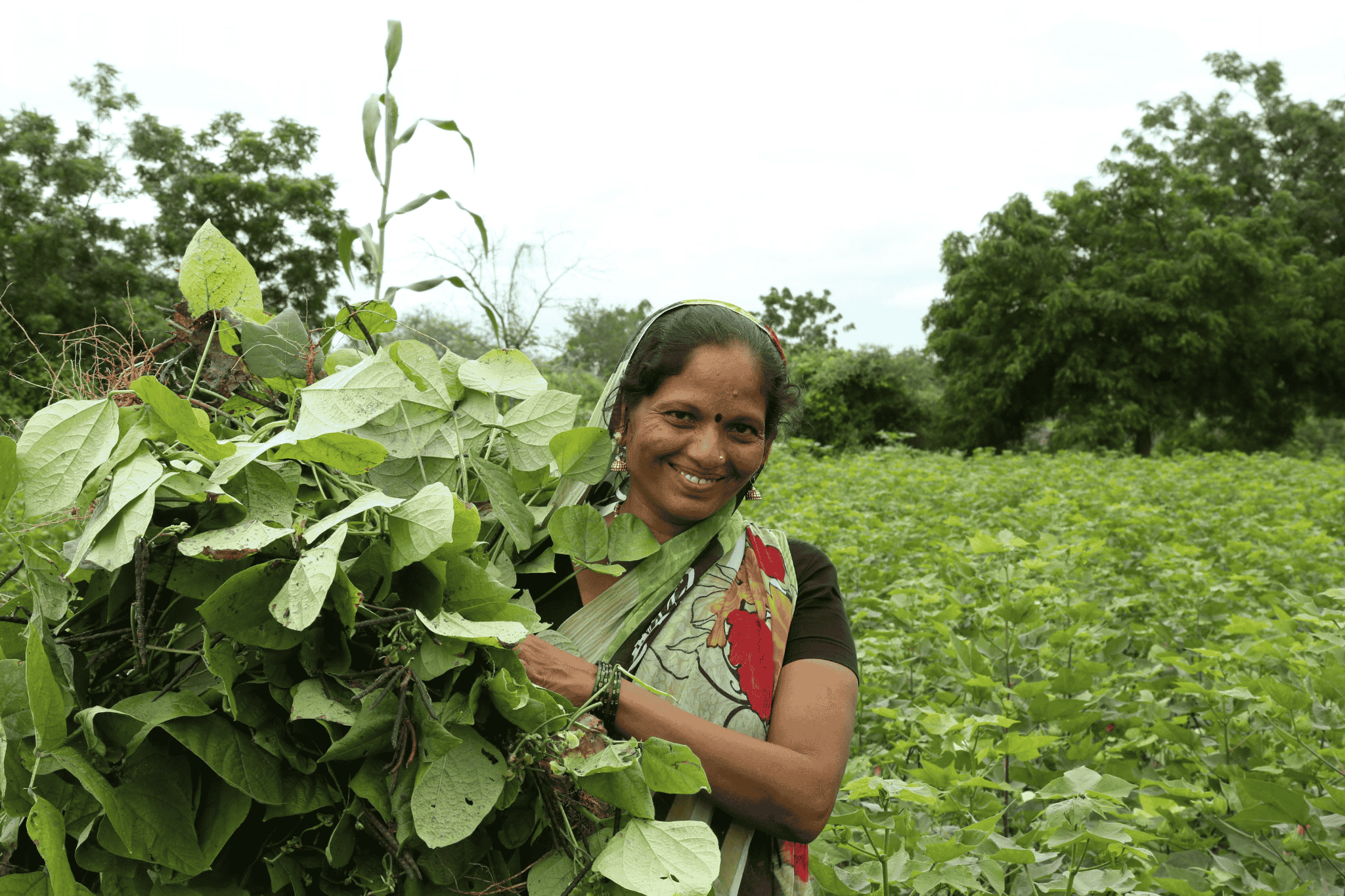Smart Hydroponics: The Future of Indian Agriculture
Agriculture plays a vital role in the growth of any developing country. In India, almost 68% of the population depends on farming, and one-third of our national income comes from agriculture.
However, despite its importance, traditional farming methods face many challenges like:
- Unpredictable weather and climate changes,
- Soil-borne diseases,
- Pest attacks,
- Manual labor for ploughing and irrigation, and
- Limited land availability.
To overcome these problems, we need smart agriculture, where modern technologies are used to improve productivity and efficiency. One such promising solution is hydroponics, combined with IoT (Internet of Things).
What is Hydroponics?
Hydroponics is a soilless farming method where plants are grown using nutrient-rich water solutions instead of soil.
Why Hydroponics is Better:
- Faster Growth: Plants grow 30-50% faster than in soil.
- Less Water Usage: Saves up to 90% water compared to traditional farming.
- Space-Saving: Can grow more plants in smaller areas – perfect for cities.
- No Weeds or Soil-Borne Diseases: Reduces chemical pesticide use.
- Year-Round Production: Controlled environment allows continuous farming.
Hydroponics = Healthy Crops + Healthy Farmers + Healthy Earth

Comparison between Traditional Farming (Soil) and Hydroponic Farming (Water).
The Role of IoT in Hydroponics
The real game-changer is automation through IoT. IoT stands for Internet of Things, which connects devices to the internet so they can send and receive data.
In this project, a Node MCU microcontroller is used to monitor and control the hydroponic system.
How It Works:
- Sensors continuously measure environmental conditions like:
- DHT11 Sensor – checks temperature and humidity,
- pH Sensor – monitors acidity or alkalinity of water,
- EC (Electrical Conductivity) Circuit – measures nutrient levels.
- The Node MCU collects this data and automatically adjusts water and nutrient supply.
- If any reading goes out of range, alerts can be sent to the farmer’s smartphone through a mobile app.
This automation eliminates the need for constant human supervision and makes farming smarter and more efficient.
Problems With Traditional Farming
Traditional agriculture has several challenges that make it less sustainable:
- High water consumption due to flood irrigation.
- Soil erosion and degradation from over-farming.
- Heavy use of pesticides and fertilizers, harming health and the environment.
- Unpredictable crop failures due to climate change.
- Labor-intensive practices that require high physical effort.

Drought-Affected Fields, Pest Attacks, and Labor-Intensive Farming Practices.
Advantages of Smart Hydroponics
This IoT-enabled hydroponics system offers many benefits for small and large farmers:
|
Feature |
Traditional Farming |
IoT Hydroponics |
|
Water Usage |
Very High |
90% Less |
|
Land Requirement |
Large Area Needed |
Compact |
|
Crop Growth Rate |
Slower |
30–50% Faster |
|
Disease Control |
Hard to manage |
Almost none |
|
Monitoring |
Manual |
Fully Automated |
|
Profitability |
Moderate |
High with Premium Crops |
Real-Life Example: Indian Farmer’s Story
A farmer in Pune, Maharashtra, switched from soil-based farming to a small hydroponic greenhouse.
- He used a Node MCU IoT system to grow lettuce, spinach, and strawberries.
- His water usage dropped by 85%, and he tripled his income by selling high-value crops to nearby restaurants and supermarkets.
- Most importantly, he no longer depends on the monsoon, making his income stable throughout the year.
 Prosperous Farmer, Prosperous Nation
Prosperous Farmer, Prosperous NationWhy India Needs Smart Agriculture
India’s population is projected to reach 1.6 billion by 2050, which means food demand will double. To feed everyone while conserving natural resources, technology-driven farming is the only solution.
Hydroponics and IoT together can:
- Save water in drought-prone regions,
- Enable urban farming on rooftops and balconies,
- Increase crop yields with fewer resources, and
- Reduce pollution from pesticides and fertilizers.
Conclusion
This project proves that hydroponic farming with IoT automation is a revolutionary step forward for Indian agriculture. By combining modern technology with farming, we can solve traditional challenges, empower small farmers, and secure the nation’s food supply.
The future of farming isn’t in the soil—it’s in smart systems powered by technology and innovation.
References
- Food and Agriculture Organization (FAO), Hydroponics: Growing Without Soil.
- Ministry of Agriculture & Farmers Welfare, Govt. of India (2024).
- Gulati, A., & Bathla, S. (2002). Capital Formation in Indian Agriculture.
- Chand, R., & Parappurathu, S. (2012). Agricultural Growth and Productivity Trends in India.
- IoT in Agriculture: Research Paper, International Journal of Modern Agriculture (2023).

